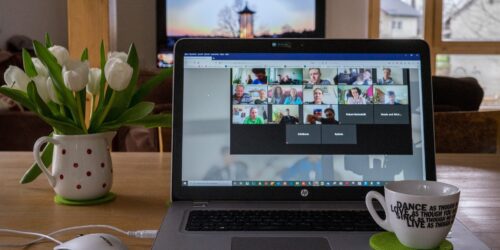
Micro-Credentials as Building Blocks to Lifelong Learning
By Dorina Grossu, Professor (Contract), School of Workforce Development, Continuing Education, and Online Learning
My professional career focus, for the last 10 years, has directed me towards online education and technologies that are used to enhance our learning and life experiences. I was excited when I discovered that Conestoga was offering online micro-credential courses whose credits apply to a Post-Secondary Teaching certificate.
I decided to challenge myself and take the required course credits for this certificate program. So far, I have completed 24 courses between Winter 2021 and Spring 2021. I also took advantage of the opportunity to apply six credits from the eCampusOntario Ontario Extend courses, which I had previously completed in the Summer 2020.
There are many factors that have contributed to my success in these micro-credential courses so far.
My success factors
One factor was the short course structure. Delivered in a one- or two-week time frame, the courses are easy to access and complete. There is a limited time of six hours of work for each course, so I was able to schedule my time for them mostly in the afternoons, and on Saturdays and Sundays. Since the courses are dynamic and short, the results are immediate, and I have felt a sense of satisfaction and progress completing each one.
Another positive aspect for me is the level of engagement. In the short courses I have engaged with many other professors who have had years of teaching experience, and with the Teaching and Learning professors who have developed the courses. I have learned a lot from the professors at Conestoga by reading their posts and participating in discussions; for me, this is the richest and most developed environment suitable for online learning.
In one course, I was able to rethink the final summative test as a project-based business case. Students have explained to me they are more comfortable working together in teams than writing closed-book exams. I believe when students feel more comfortable with the final assessment, they will be more engaged and find more time to work on their final projects.
The courses also gave me many opportunities for self-directed reflection. The micro-credentials don’t force you to learn one or two concepts, but instead allow you to make links to new information while digging deeper into the material. This self-directed approach provided me with further inquiry into my own learning patterns.
I have started asking my own students more questions, and they seem to like that. Students are feeling isolated right now, so the questions I ask them I feel connects us. Some of the students I teach are learning overseas and it’s late at night for them. They say they enjoy being in a class, being asked questions and learning, even if they don’t always talk.
Next steps: The Capstone

I plan to complete the Post-Secondary Teaching Certificate’s capstone course and project. I will most likely be using one of the current statistical courses that I teach as a focus. I believe the course could be improved in terms of adding more activities for greater student engagement that will help deepen students’ learning.
I’m looking forward to applying what I’ve learned in the micro-credential courses: change the assignments and exams to be more inquiry-based, be more project-focused, and highlight the process of learning in statistics rather than just the formulas.
Advice for taking micro-credential courses
I encourage my faculty colleagues to look at the micro-credentials that we have at Conestoga College for lifelong learning and explore the post-secondary teaching courses, in particular.
My advice to faculty is to make the courses you take a priority. When I was taking the courses, if I had any free time I would put that time towards them. I found I was going back several times to the content to revisit and review what I read. To succeed, we need patience and persistence, but it’s worth it because what we learn we use.
It’s also a fast process. I took three or four courses at a time, and it can be intense. So it’s a good idea to look for a time you are free, or to not take too many at a time. It’s also important to review the course when you register. Match how much time you spend to where you know your strengths and weaknesses are.







